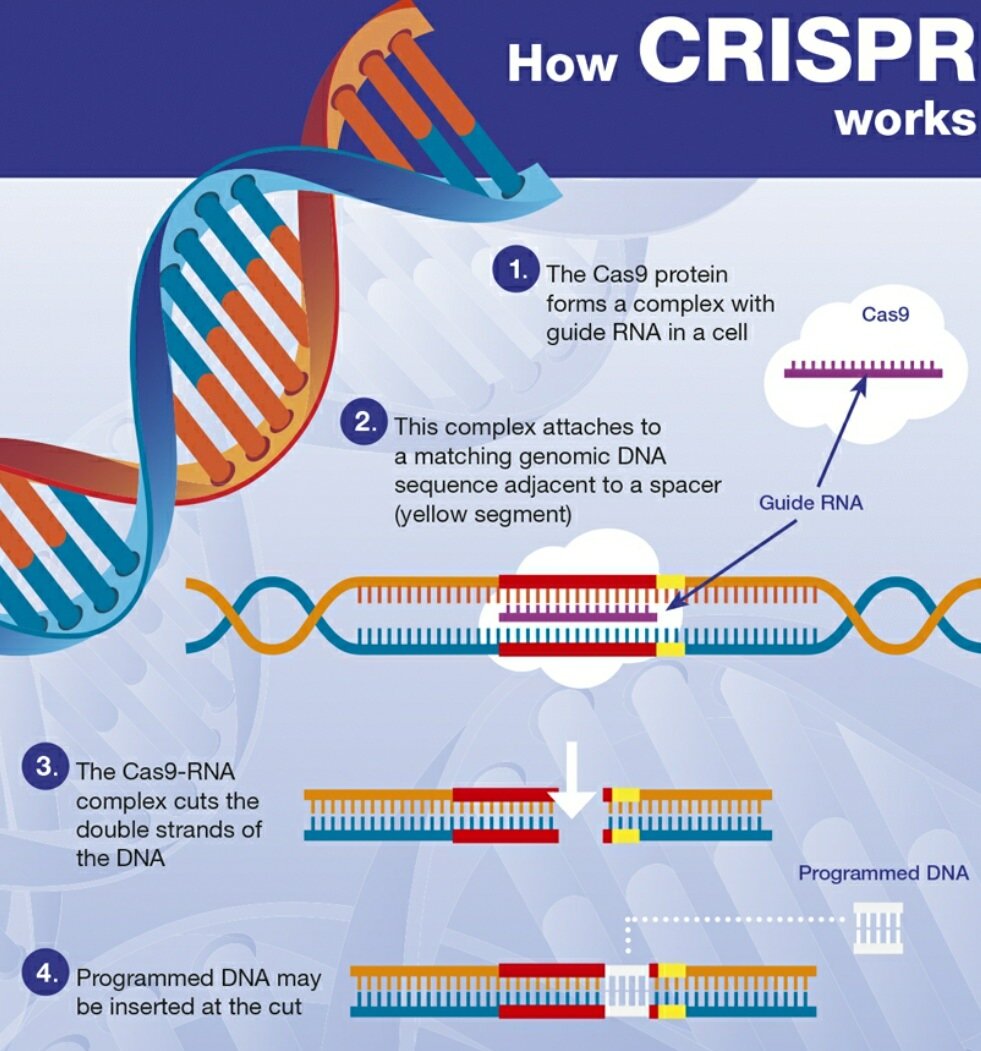Science & Technology
CRISPR Technology
- 14 Oct 2020
- 7 min read
This article is based on “Gene editing, the good first and then the worries” which was published in The Hindu on 13/10/2020. It talks about the opportunity and issues related to CRISPR (Clustered Regularly Interspaced Short Palindromic Repeats) technology.
Recently, the Nobel Prize in Chemistry for 2020 was given to two women scientists namely Emmanuelle Charpentier (France) & Jennifer A. Doudna (Germany). The nobel prize was given to them for the development of a method for genome editing.
The two scientists have pioneered the use of CRISPR (Clustered Regularly Interspaced Short Palindromic Repeats) – Cas9 (CRISPR-associated protein 9) system as a gene-editing tool.
Using components of the CRISPR system, researchers can add, remove, or even alter specific DNA. This has led to a significant impact in biology, medicine, and agriculture.
However, there is growing fear that the promising gene-editing system can cause many social and anthropogenic issues.
Application of Gene-Editing
- Agriculture: It is being tried out in agriculture primarily to increase plant yield, quality, disease resistance, herbicide resistance and domestication of wild species.
- The huge potential to edit genes using this tool has been used to create a large number of crop varieties with improved agronomic performance; it has also brought in sweeping changes to breeding technologies.
- Genetic-Research: CRISPR systems are already delivering superior genetic models for fundamental disease research, drug screening, and therapy development, rapid diagnostics, in-vivo editing and correction of heritable conditions.
- Scientists are working on the theory that CRISPR might be used to boost the function of the body's T-cells so that the immune system is better at recognizing and killing cancer.
- Disorders of the blood and immune system are other potential targets.
- Medical Treatment: CRISPR/Cas9 has also been seen as a promising way to create potential genome editing treatments for diseases such as HIV, cancer or sickle cell disease.
- Such therapeutics could inactivate a disease-causing gene, or correct a genetic mutation.
- Researchers in China edited human embryos to try to correct a faulty gene that caused an inherited blood disorder.
- Therapeutic Cloning: It is a process whereby embryonic cells are cloned to obtain biological organs for transplantation.
Issues Involved
- Debate in Agriculture Genetic Modification: There are concerns over the inadvertent effects, such as the creation of food that can cause an allergic reaction.
- Two studies, one from the Karolinska Institute, Sweden, and the other from the biopharmaceutical company Novartis, have highlighted that CRISPR-Cas9-edited cells might trigger cancer.
- Germline Modification: Germline Editing means deliberately changing the genes passed on to children and future generations – in other words, creating genetically modified people.
- It is the most of the ethical discussions related to genome editing center around human germline editing. This is because changes made in the germline would be passed down to future generations.
- Human germline modification has for many years been widely considered off-limits, for both safety and social reasons.
Note:
- Germline is the cellular lineage of a sexually reproducing organism from which eggs and sperm are derived.
- Genetic Inequality: Through Gene-editing, wealthy parents can buy the latest offspring upgrades for their children.
- This will lead to the emergence of genetic haves and have-nots and even greater inequality than the present world already lives with.
- Some of the key scientists in this field have concerns about the potential misuse of a technology that could be used for eugenics, to create genetic discrimination.
- Illegal Experimentation: Last year, a Chinese researcher used the tool to modify a particular gene in the embryo to make babies immune to HIV infection, which led to international furore.
- Though no guidelines have been drawn up so far, there is a general consensus in the scientific and ethics communities that the gene-editing technique should not be used clinically on embryos.
Status In India
- In India, several rules, guidelines, and policies backed by the “Rules for the Manufacture, Use, Import, Export and Storage of Hazardous Microorganisms/Genetically Engineered Organisms or Cells, 1989” notified under the Environment Protection Act, 1986, regulate genetically modified organisms.
- Apart from it, the National Ethical Guidelines for Biomedical and Health Research involving human participants, 2017, by the Indian Council of Medical Research (ICMR), and the Biomedical and Health Research Regulation Bill implies regulation of the gene-editing process.
- This is especially so in the usage of its language “modification, deletion or removal of parts of heritable material”.
- However, there is no explicit mention of the term gene editing.
Conclusion
The gene-editing tool has indeed taken “life sciences into a new epoch”. However, like other scientific development it can turn out to be both as a boon or a bane. Therefore, it all depends how well the gene-editing science is regulated for the welfare of humankind.
Thus, it is time that India came up with a specific law to ban germline editing and put out guidelines for conducting gene-editing research giving rise to modified organisms.
|
Drishti Mains Question The gene-editing tool has indeed taken “life sciences into a new epoch”. However, like other scientific development it can turn out to be both as a boon or a bane. Discuss. |
This editorial is based on “Award for auctions” which was published in The Business Standard on October 12th, 2020. Now watch this on our Youtube channel.







